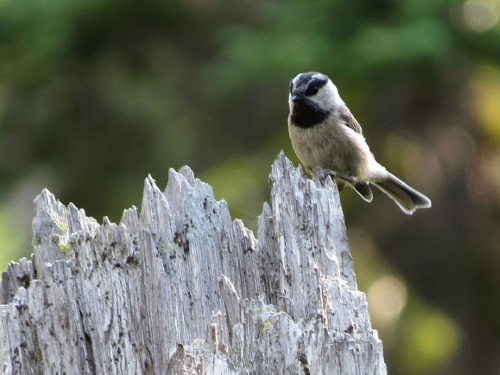|
|
|
Utah’s Summer Bird Checklist
|
|
Utah is a great place to birdwatch, and when you’re out and about this summer whether you’re hiking, camping, or just staying in your backyard, there are plenty of birds to keep an eye out for. Below is a list of 30 common birds in Utah during the summer. Why don’t you use it as a checklist and see if you can spot them all before the end of summer? If you’re not familiar with what some of these birds look like, there is a wealth of resources online where you can learn not only how to recognize these birds by sight, but by sound as well.
|
|

Mountain chikadee, Poecile gambeli
|
1. Canada goose
2. Mallard
3. California quail
4. Ring-necked pheasant
5. Great blue heron
6. Red-tailed hawk
7. Killdeer
8. Rock pigeon
9. Great horned owl
10. Downy woodpecker
11. Northern flicker
12. American kestrel
13. Western scrub jay
14. Black-billed magpie
15. Common raven
|
|
16. Mountain chickadee
17. American robin
18. European starling
19. Spotted towhee
20. Red-winged blackbird
21. Western meadowlark
22. House finch
23. House sparrow
24. Snowy egret
25. White-faced ibis
26. California gull
27. Mourning dove
28. Western kingbird
29. Barn swallow
30. Lazuli bunting
|
Picture Credits
p.1. Top, Wildlife Rehabilitation and Nature Center, Castalia, OH, http://backtothewild.com
Bottom, Karen with an american kestral, Falco sparveriusGreat Basin Wildlife Rescue.
p.2. Top, northern saw-whet owl, Aegolius acadicus, Great Basin Wildlife Rescue.
Bottom, Zion Canyon N.P., Jonathan Zander,
https://commons.wikimedia.org/wiki/File:Mountains_in_Zion_National_Park,_Utah.jpg
p.3. Mountain chikadee. Poecile gambeli, Katja Schultz, https://commons.wikimedia.org/wiki/File:Mountain_Chickadee_(15180563636).jpg
|
|
|
|
|
